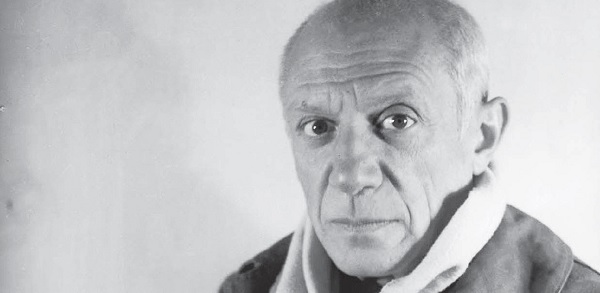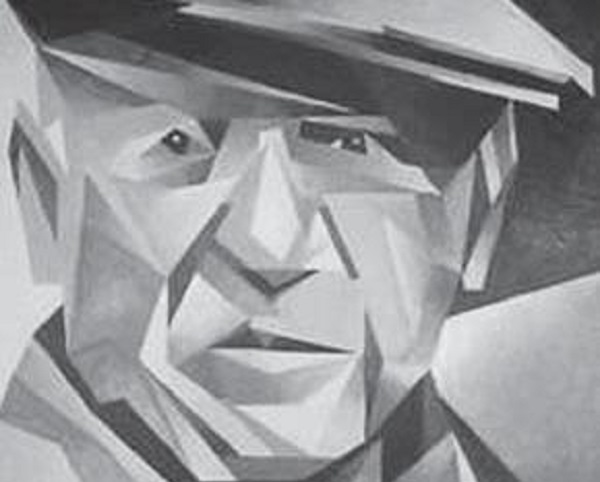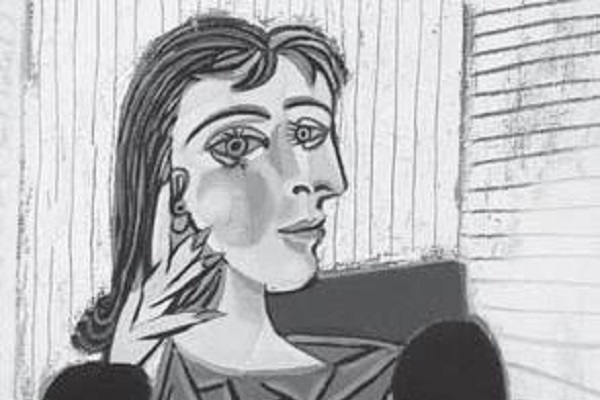Images in the Cave of Life

Art, after all, is it about the image on the canvas? Or is it related to the artist’s life?
Picasso, the famous painter of the 20th century, was the founder of Cubism along with Georges Braque.
What is Cubism? It is to break the tradition of painting people or objects from only one angle, and only draw one aspect of the three-dimensional object; Cubism observes from several angles, takes apart a shape, and then rearranges and combines it according to multiple levels.
The images presented seem fractured and abstract, which is obviously not objective reality, but the subjective image in the artist's mind. This kind of fractured collage is, in some respects, closer to the rush, chaos, and "broken pieces" of modern life.
Picasso's position in art history mainly lies here. What he painted may only be his personal experience and description of the world, but who would have thought that what he painted on the canvas was unprecedented, showing the terrifying power of sin that can be broken and transformed countless times.


Passionate, fertile and sinful?
Picasso was a very prolific painter. He left more than 50,000 works of art in his lifetime, including paintings, sculptures, sketches, prints, etc. He may be the painter with the most works in history. But looking at Picasso's life, I am afraid that few people think about it: is art related to the image on the canvas? Or is it related to the artist’s life?
Picasso's painting style varied throughout his life, and his painting style is closely related to the stages of life he passed through and the women he dated. In 1901, his friend Carlos Casagemas committed suicide with a gun, which cast a shadow on Picasso's life. He began to use a large amount of blue paint in painting, launching the "Blue Period". It shows a strong melancholy. For example, the 21-year-old "Self-Portrait" fully expresses old age and deep sadness.
Later, he met a mannequin Fernande (Fernande Olivier) in Paris and fell in love with her, thus starting the "Rose Period" (also known as the "Pink Period", 1904 to 1906). Because he fell in love with Fernand, Picasso used a large number of bright and optimistic orange and pink colors, and his themes mostly depicted circus figures, acrobats and clowns. This has also become one of Picasso's personal characteristics. one.

Picasso became a romantic, and later married a ballerina, Olga Khokhlova. However, the two couldn't get along, which led to many affairs, and the marriage broke down and they broke up. Among these romantic affairs, there was also a seventeen-year-old girl who gave birth to a daughter for him.
Politically, he remained neutral during the Spanish Civil War and refused to participate in the First and Second World Wars. Some criticized him for being cowardly, but he used the painting "Guernica" (1937) to express his deep hatred of violence and war.
After the liberation of Paris, Picasso began a relationship with Francoise Gilot, a young art student, and gave birth to two children. Nine years later, the student left, accusing him of ongoing affairs and violent abuse. He immediately married Jacqueline Roque and began to paint his wife and children. His painting style returned to realistic and sensitive brushwork, as if he could not bear the fractured and deformed painting method of taking apart and reassembling the people he loved.
Painter's Confessions and Confessions
At the age of seventy, Picasso realized that he was no longer attractive to women and could be said to be old, ugly and unloved. After such an awakening, or perhaps after a period of soul searching, he finally confessed to the world:
“In art, the public no longer looks for comfort and elevation; only the refined, wealthy, and empty…are still looking for the new, the eccentric, the original, the outrageous, and the shameful.
I myself, after and before Cubism, satisfied these masters and critics with all the eccentricities and variations that passed through my mind. The less they understand me, the more they worship me.
After amusing myself through these games, these absurdities, confusions, mysteries in paintings, and Arabic-style illustrations quickly made me famous. For a painter, fame means sales, profits, property, and wealth. Today, you know, I am praised, I am rich. But when I am alone, I really don't have the courage to admit that I am a standard painter according to the ancient tradition. Giotto, Titian, and Rembrandt are great painters, but I am just an artist who understands the masses of my own time and does my best to exploit the masses...
It's a bitter confession, much more painful than it appears, but at least it has the virtue of being sincere. 1"
Is Picasso’s confession shocking? A great painter calls himself a "popular artist". He understands his time and provides what the public demands. He also discovers that the public has blind worship of him, so he uses their worship to play the game of art. Accumulate your own fame and fortune.
Fortunately, he is self-aware and admits that he is just a "popular entertainer". But what do the public think of him? How will future generations understand him? The less I understand, the more I admire him, and the more I think he is a great artist. What a paradoxical realization! This is enough to show that the public has a blind pursuit of popular art.
The truth about the hole in your heart
However, does Picasso really have self-awareness? An artist's style cannot escape the core essence of life, and each work hides the artist's fingerprints and handprints. I think I am innovative and playing with skills, but behind the scenes there is often unconscious self-revelation and life expression.
From the perspective of Picasso's life, his life was absurd. He did not choose loyalty to the woman he loved, did not choose a side on the battlefield, and continued to change styles, colors, and opinions. This illustrates what crisis was hidden in his life. ? A person with talent, lust, money and fame, how many terrible images are hidden in the holes in his heart?
Ezekiel 8:7-10 mentions a hole in the wall. When you dig deeper, you will see that all kinds of creeping things, abominable beasts, and idols are painted on the four sides of the wall. How abstract and shocking? This kind of filth and filthiness is painted all over the four walls of the human heart. Picasso thought he was changing his painting style and playing with techniques, but in fact he did abominable things in his life and strayed far away from God's sanctuary, so that the walls of his heart were filled with horrific images, like a corrupt ruin.
As a painter, Picasso only painted the inner wall onto the canvas outside. Each painting shows rupture, deformation, intertwining of humans and animals, absurdity and confusion. Because in his life, there is no North Star to guide him. He thought he was exploiting the public, but in fact it was the public that was constantly consuming his life.
Looking back at us, what is painted on the canvas of our lives and in the holes in the walls of our hearts? Are there any unclean reptiles or animals? Do you have any idols? Is it painted in a corner, or does it cover all four walls?
I hope we can be like the verses written by David:“You desire the truth within; you are in my secret place and you make me wise.” (Psalm 51:6)If we can pursue godliness throughout our lives and yearn for the inner honesty that God loves, we will be able to obtain true wisdom in life. Only then can the canvas of our lives present a picture that is in line with God’s will. The point is who lives in our secret places, who do we allow to control the brush of our lives, our hearts? Are we willing to let God paint our canvas?
I hope that we can purify our hearts, spread out the canvas of our lives, and allow God to have complete sovereignty to paint. At the same time, I also pray for all popular artists and authors, asking God to cleanse the holes in their walls and purify their hearts, so that the art they present can have a light and salt influence on this generation.
Note
Pablo Picasso, in a 1950s radio interview with Libro Nero, and later in National Review, Nov. 19, 1990. From ORIGIN 12, January 1964, Cid Corman, ed. (Kyoto, Japan).

Journalist profile:
Mo Fei came to the United States from Taiwan at the age of 18. He worked as a computer engineer at Hughes Aircraft Company in California for six years, then specialized in writing, and now lives in Los Angeles. He is the author of the prose "Accidentally, I Stumbled upon Paradise" and the novels "Portraits of Six Women", "Remnant Faces" and other books. He is a standard bookworm and lives in his head.
